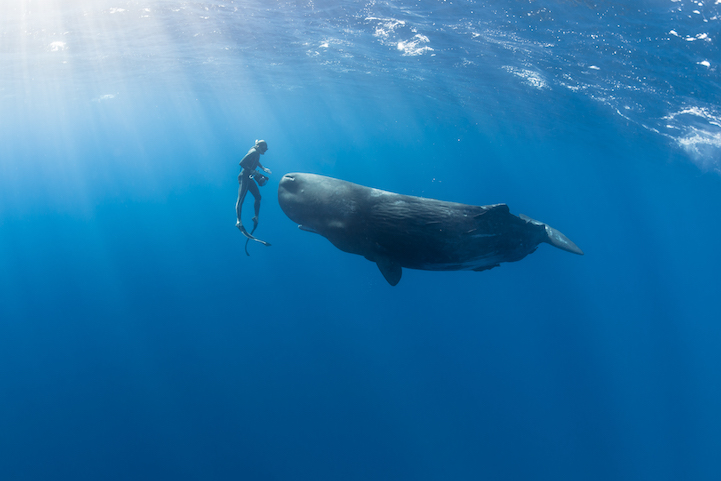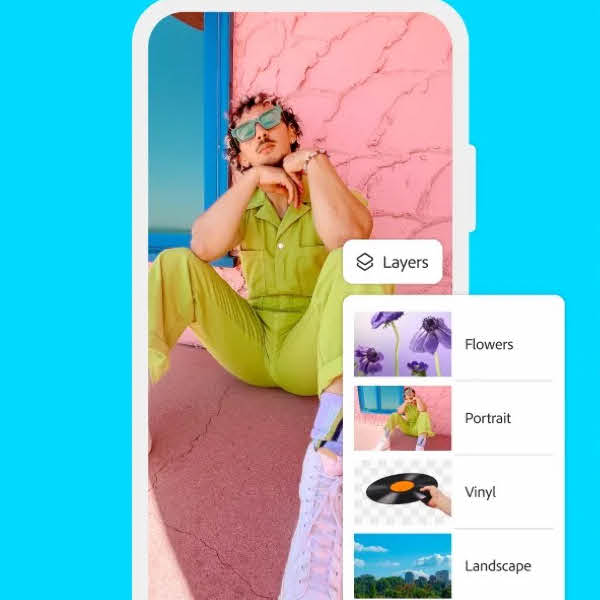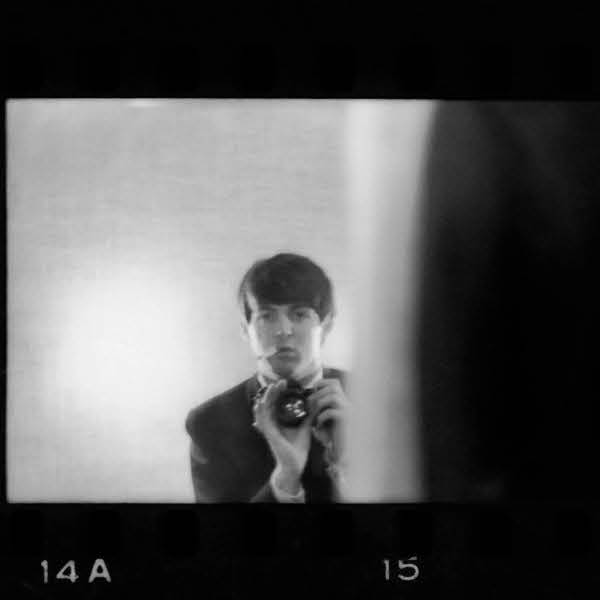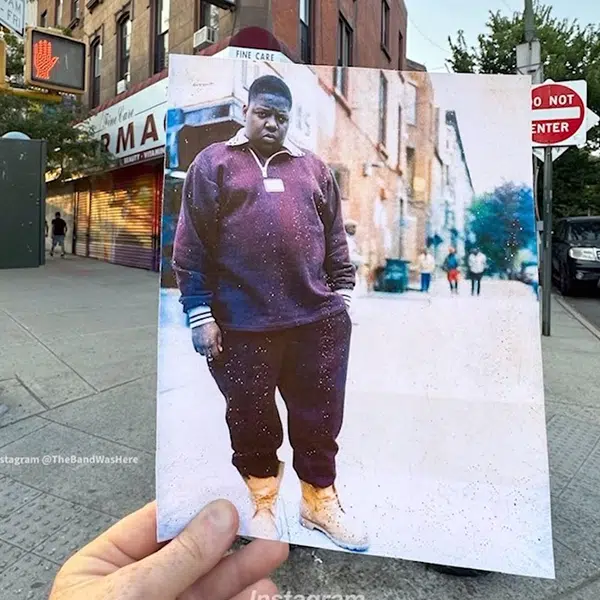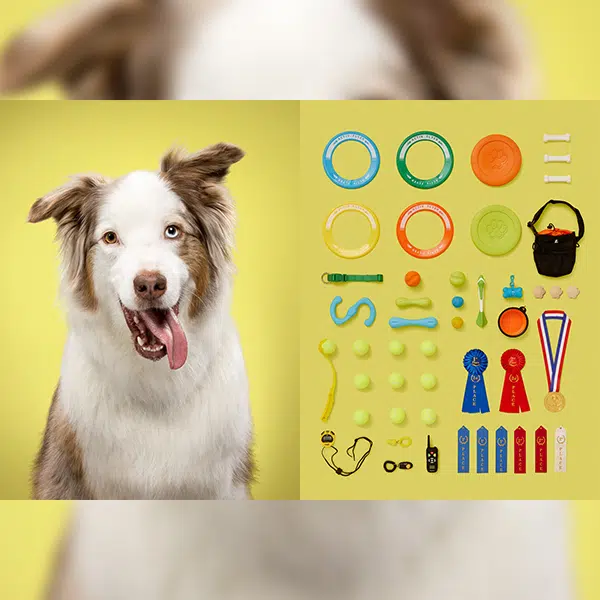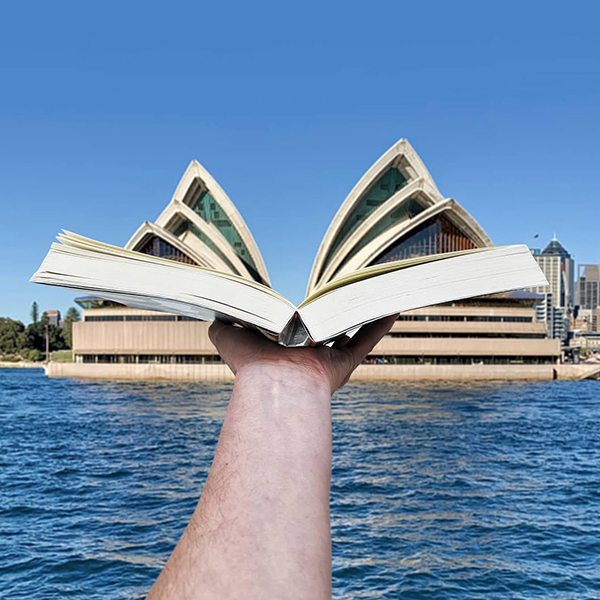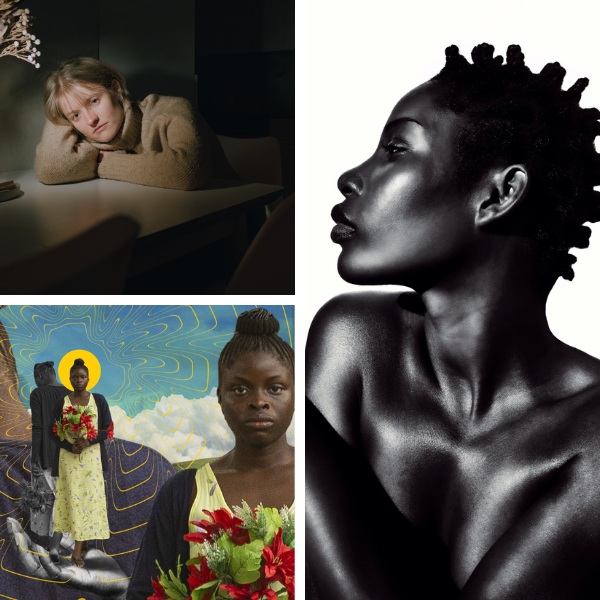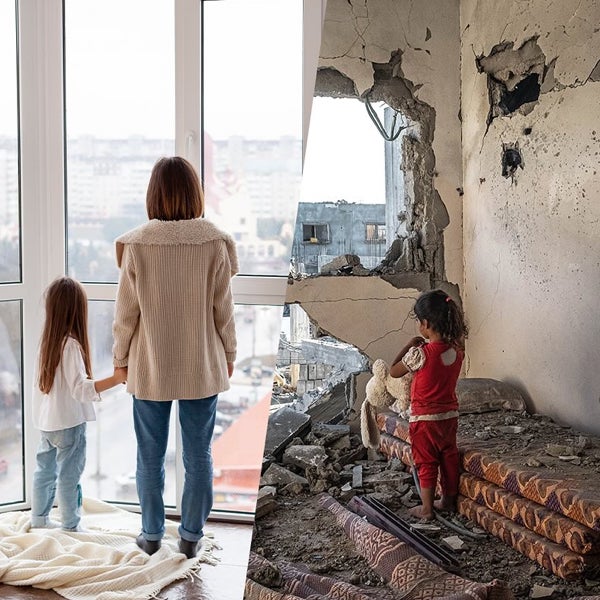For nearly 15 years, freediving and photography duo Alex Voyer and Alex Roubaud of Fisheye have been exploring and documenting the stunning depths of the world's oceans. The two friends hit the seas when they're not working at their day jobs in Paris, using their time away from the office to slip into the water and capture the beauty of whales, sharks, dolphins, and other oceanic creatures.
Beyond gorgeous aesthetics, Voyer's and Roubaud's photos also highlight the importance of interacting with marine life responsibly and gently. The pair told us that many sea creatures are often disturbed in their natural environments by tourists who romanticize the animals as good-natured souls waiting to befriend humans. From their 15 years of freediving experience, Voyer and Roubaud have learned how to approach marine animals with respect and care–a fact that comes across clearly in their breathtaking portraits of intimate encounters with the creatures.
We had the chance to ask the duo about their photographic process and unique freediving experiences. Scroll down to read that exclusive interview.
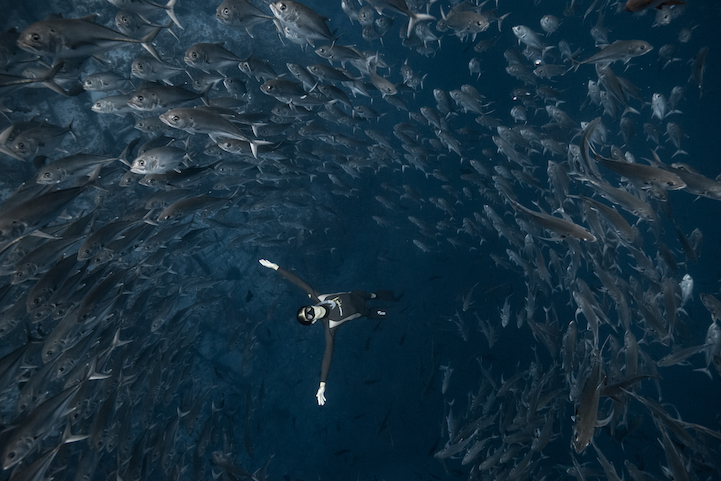
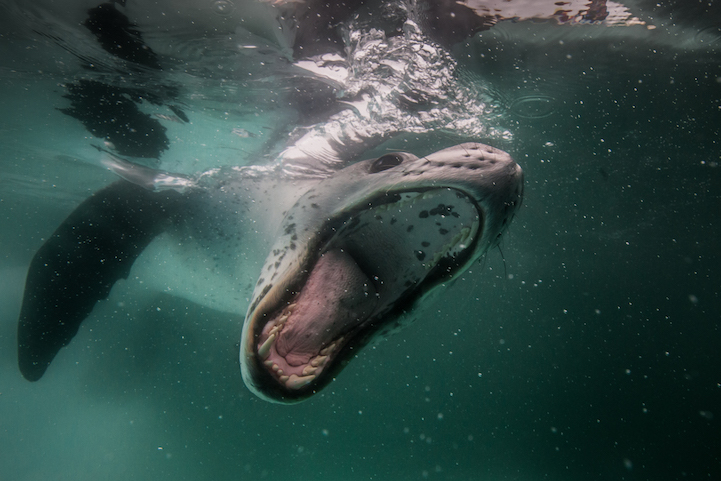
Which came first for you, freediving or photography?
Freediving came first, 15 years ago, and underwater photography came maybe 2 years later. Photography naturally came to us as it allowed us to share moments we experienced underwater.
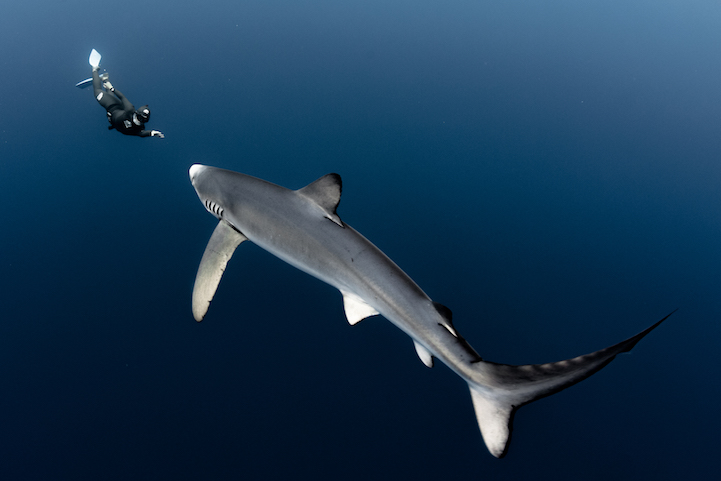
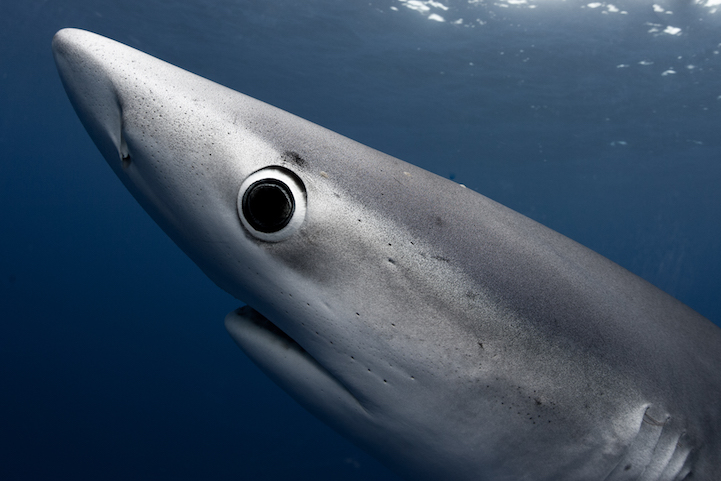
You've been freediving and photographing together for years. How did this partnership form?
We have both been spending time since our childhood underneath and on the sea. We met each other in a totally different environment in Paris 15 years ago, playing along with some fellow friends in the cole Nationale des Beaux Arts de Paris brass band, long before Fisheye's creation.
Freediving was already a common passion when we started diving together, then we became instructors to share this discipline with others in our Parisian freediving club Apne Passion, and to travel around the world to take pictures.
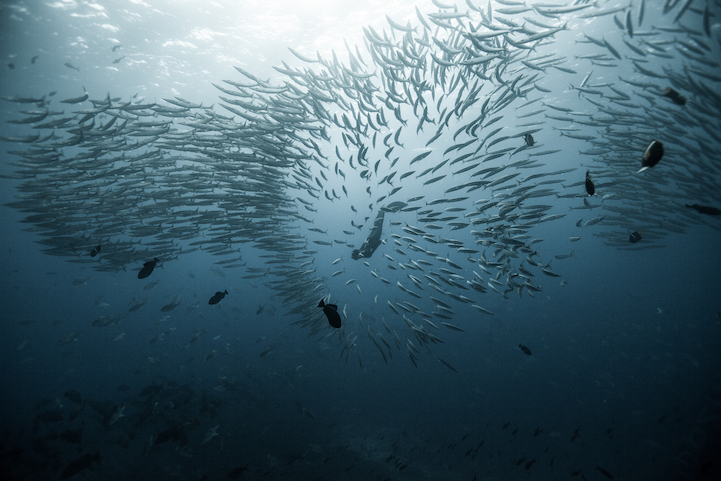
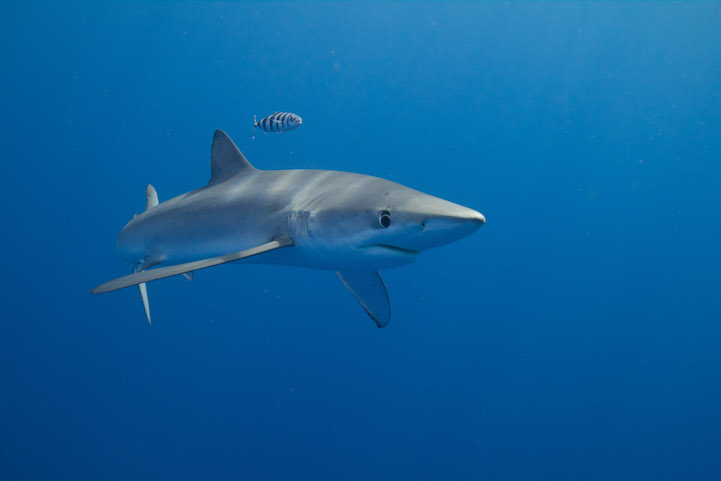
What's your shooting process usually like, in the water?
We have been freediving buddies for a long time, which is absolutely necessary for practicing our passion.
Freediving is not a dangerous activity as we respect the elementary rules of safety, and diving with a buddy is the first and vital rule! We always dive together, sometimes with other freedivers who are featured in our pictures.
Generally, nothing is planned before the dive because we can never anticipate the dive's encounter, each dive is so different. We just try to spend as much time as we can in the water and let the animals come to us naturally, then start the photo shoot.
While diving, we don't have to talk a lot; we alternate the dives to look after each other. Some animals sometimes try to interact with us; the diving buddy then naturally becomes the model for the one shooting the animal.
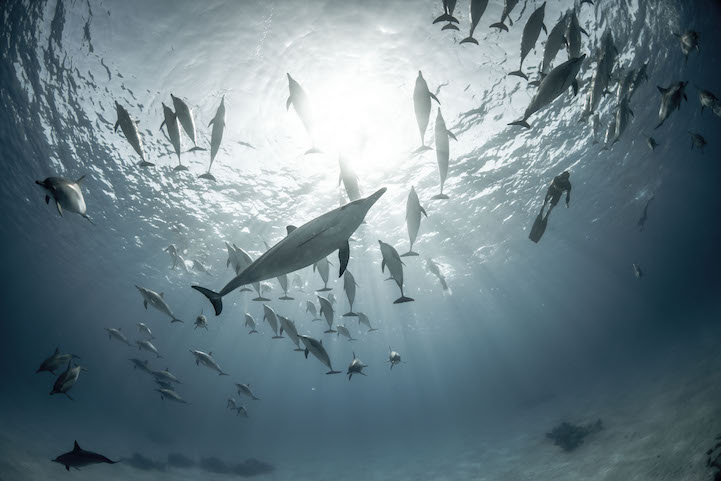
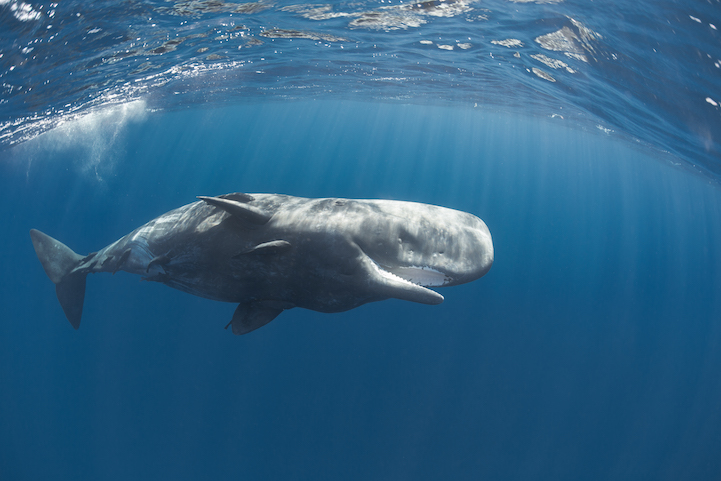
How do you manage to get so up close and personal with wild creatures in the ocean?
Freediving is our way to take pictures; it's a soft method to approach animals. Encountering a freediver in the ocean is a strange experience for those creatures, as we are quite big and our behavior is really different from what they usually see in their environment. We have to be patient and let them come to us. They quickly understand that we are not aggressive, and they are therefore curious about us.
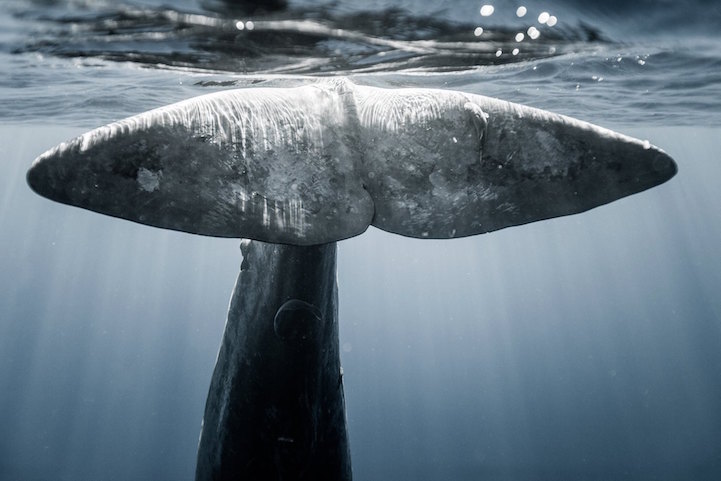
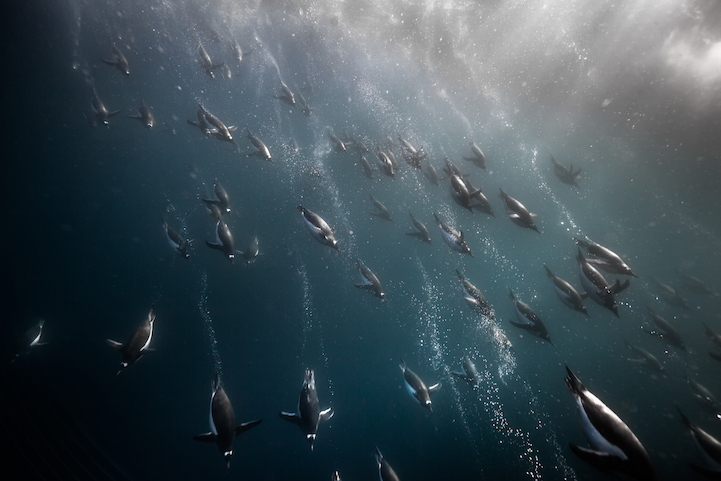
You've been freediving all over the world. What are some of your favorite locations, and why?
We try to dive anywhere we can find water, from Paris to the Pacific Ocean, we are happy wherever we can swim and dive!
There is something very important to us–we don't want to dive in just any condition. Our major concern is the way that encounters arise as there is more and more demand for whale watching and dolphin swimming. Many of us are persuaded that dolphins and whales are kind animals waiting for human interaction, trying to save humans when they are drowning, and there's the idea of them being mystical messengers coming from the depths of the seas, i.e., the perception of the movie Flipper. This perception is unfortunately false as we can observe a tourism industry developing around whale watching and dolphin swimming. Many operators are not formed to approach the animals, and so disturb the animals in their natural environment.
We think that it is possible to interact with marine mammals while being respectful to nature in a general way.
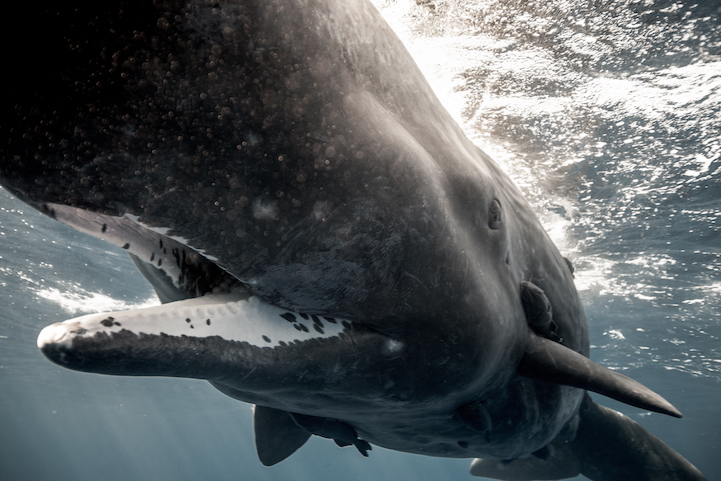
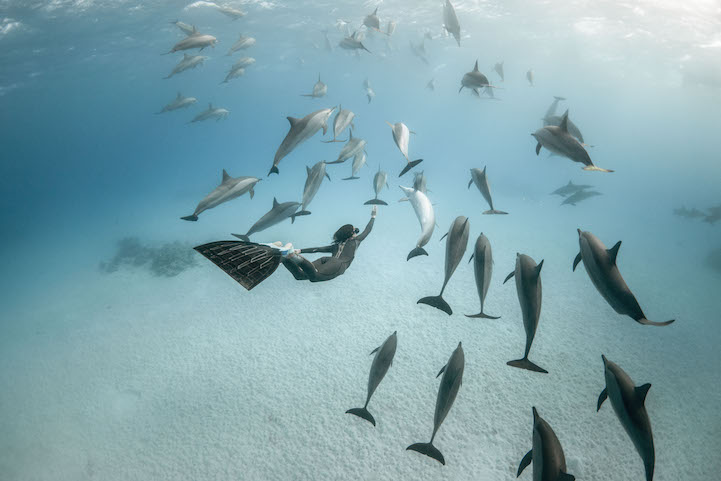
What kind of images are you trying to create?
We are, respectively, an architect and a sound engineer, and through our jobs we evolve in an artistic field.
We have both had the chance to meet Frederic Buyle during a technical freediving course in Greece in 2011. He became a good friend, probably because we share a certain vision of the world and of our sport. He also shared with us his technical and artistic experience of underwater photography, which was different from traditional scuba diving photography.
We met other passionate and fascinating profiles from the underwater micro-family such as Francine Kreiss, Jrme Espla, and others. Our obsession therefore evolved from solely freediving to meeting creatures that fascinated and sometimes frightened us. Our photos are a way to attest to this incredible world that we encounter. Freediving and photography are therefore incredible tools, without being a finality.
A little farther from macro-underwater photography, our approach of underwater photography is inspired and nourished by numerous artistic fields. The movements associated with dancing, the perception of volumes in architecture, of painting and even singing, when we have the chance to encounter humpback whales. Deprived of smell, limited in our visual field with only a few meters of visibility and often much less mobility than our subjects, we evolve in a world where sound, light and colors are suddenly very different from what we know, and we must therefore learn to see and feel differently. In an environment that is 800 times denser than air, the sudden changes in temperature affect us; our very perception of time is modified by our freediving.
These are all constraints that shape our work and our photos and push us to discover and experiment more.
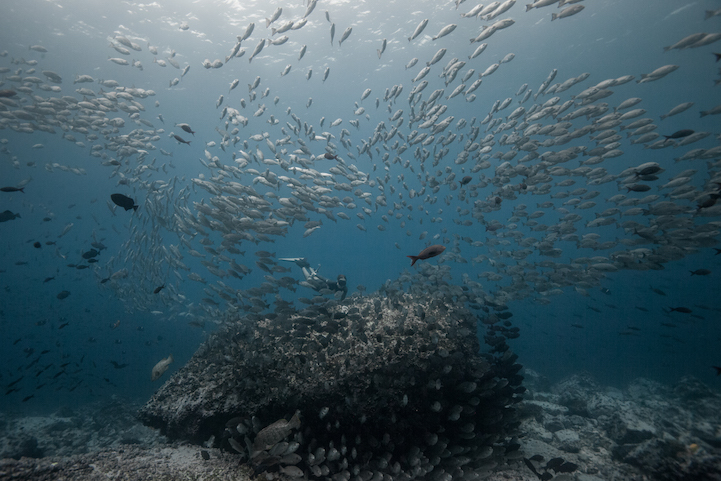
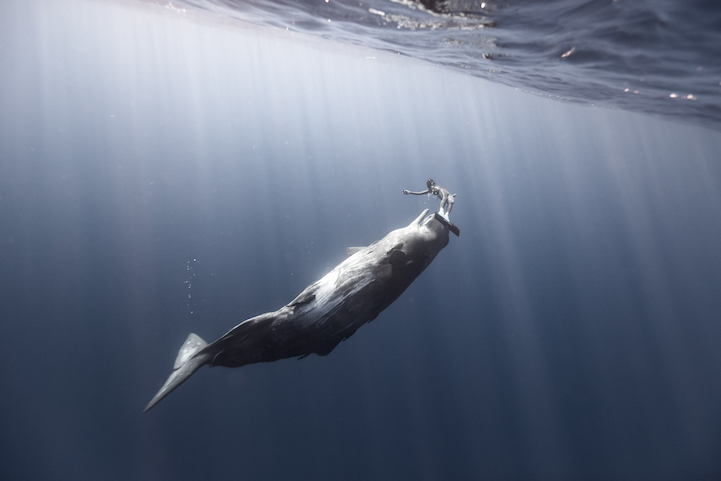
My Modern Met granted permission to use photos by Alex Voyer and Alex Roubaud.
